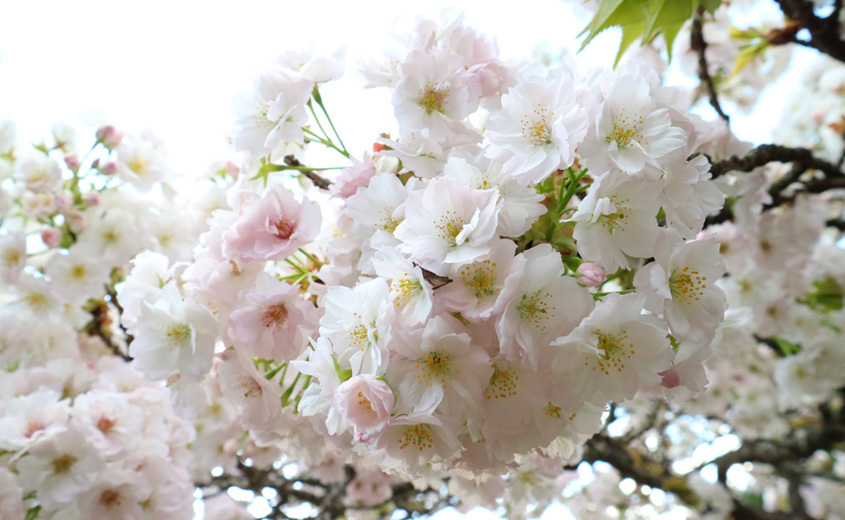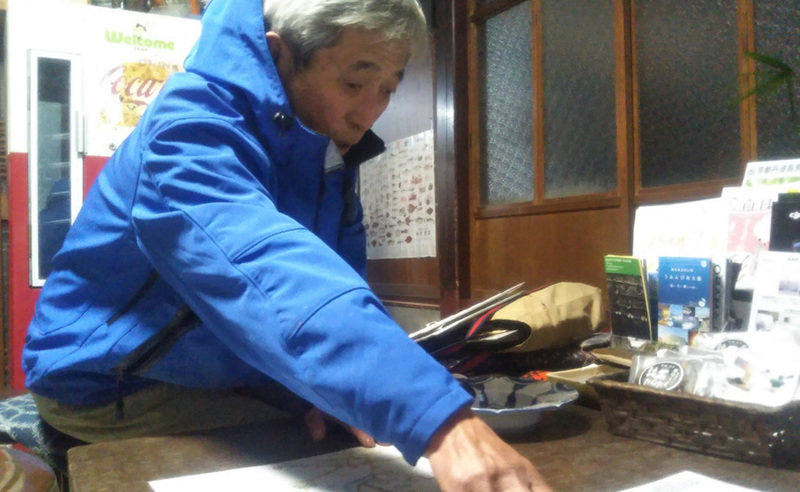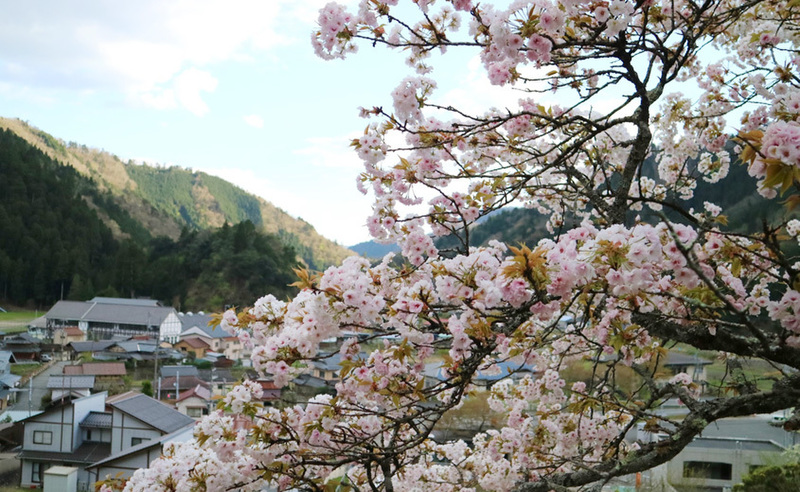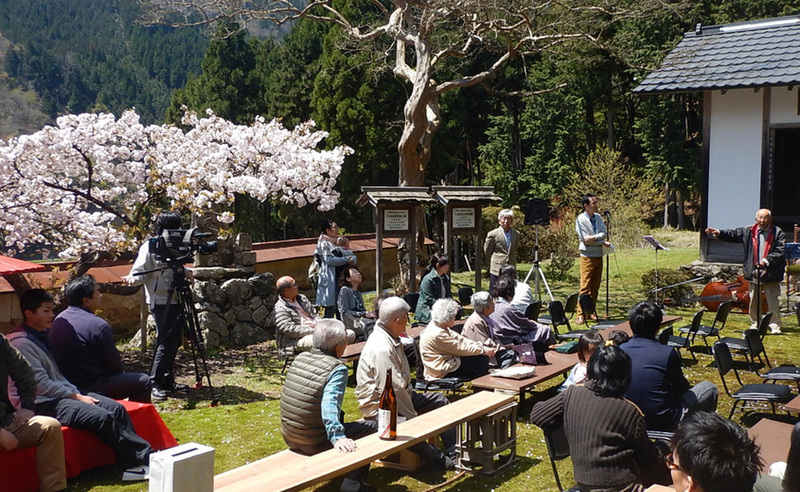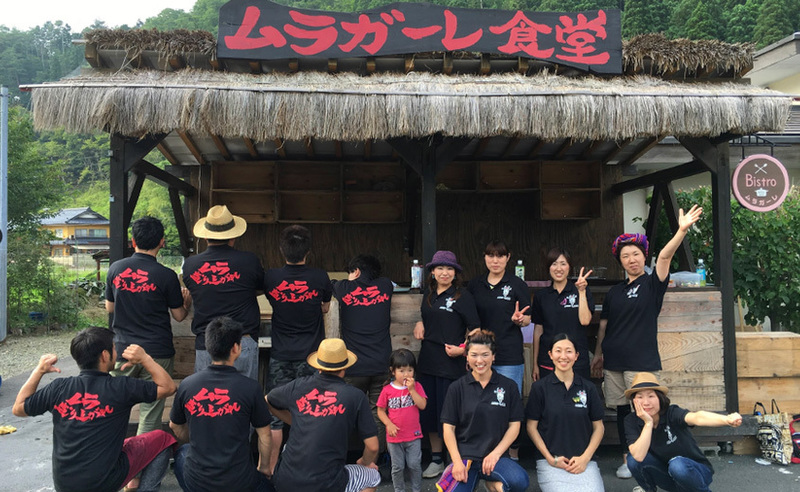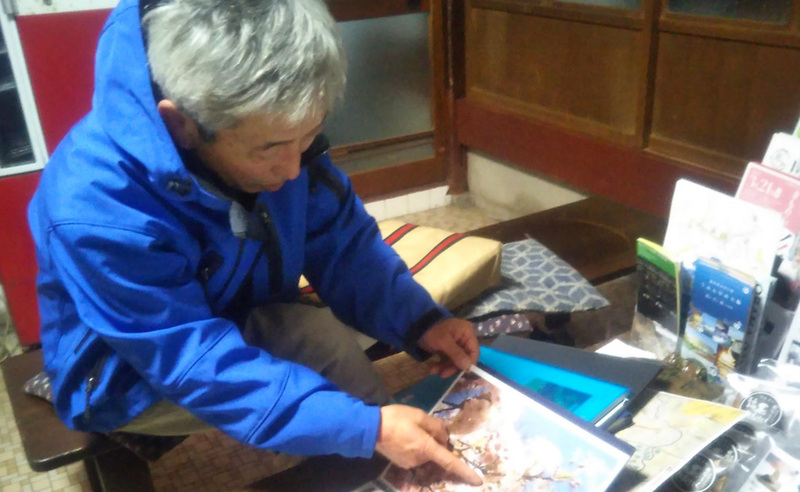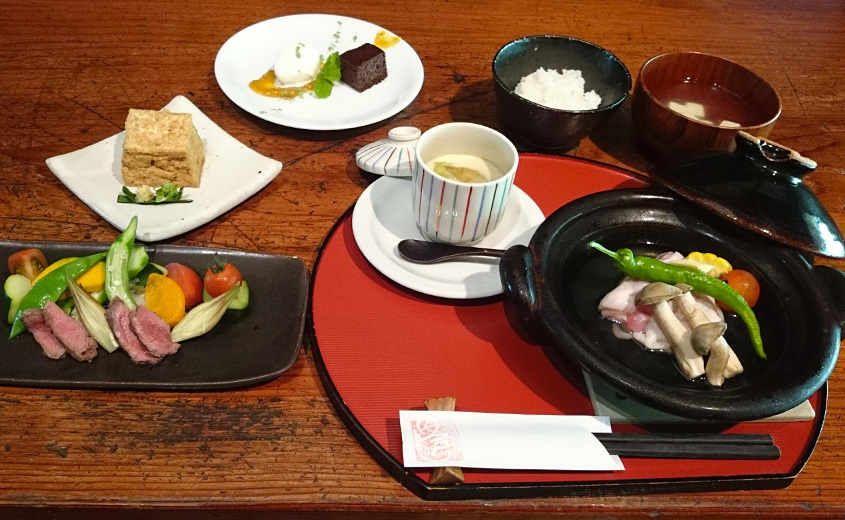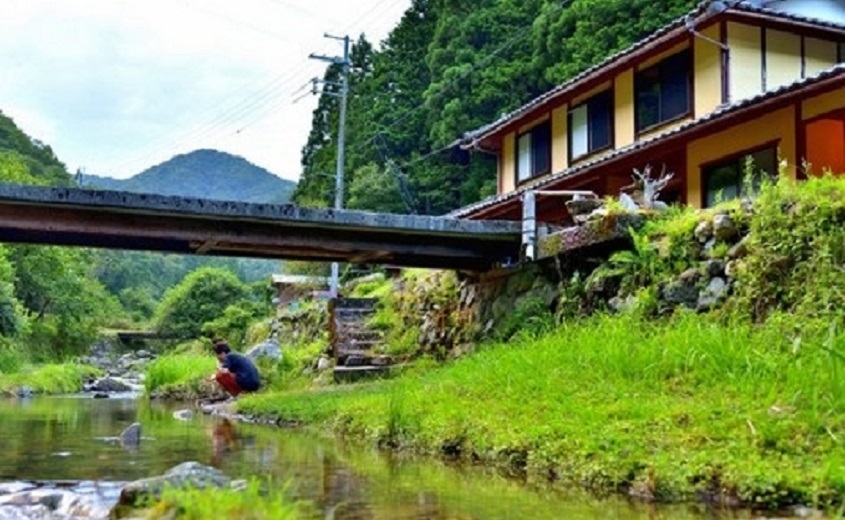Tsurugaoka, the post-town situated midway of Saba Kaido (Mackerel Road) where merchants, traveling entertainers, peddlers of medicines were seen coming and going.
Mr. Koda, the innkeeper of Miyama’s ryokan Kigusuriya Inn, archly said “I'll show you something interesting” and showed us the antique map. It describes the journey route of Tsuchimikado family, known as the descendant of the famous Onmyoji (the Yin Yang Master) ABE no Seimei, from their home in Kyoto City to Obama (Fukui Prefecture) in early Edo period. They stayed “Tsurugaoka” on the way back to Kyoto. After the travelers passed the tricky mountain path, Horikoshi Toge, they would probably stop at Tsurugaoka to unwind the fatigue of their journey. As such, Tsurugaoka had been a flourishing post-town on the Mackerel Road (“Saba Kaido”), the historical major road that linked Wakasa region and Kyoto.
“There were a lot of shops and restaurants in Tsurugaoka when I was a child. Currently, we are the only one ryokan (traditional Japanese inn) here, but I recall there were 4 inns at that time.” He liked to watch guests staying Kigusuriya such as fish dealers, traveling entertainers, peddlers of medicines etc. A part of Mackerel Road from Miyama area toward Sea of Japan side, Wakasa Road, is atmospheric forest road with old growth forest of beech trees and several historical sites.
Enjoy cherry blossom in spring and fireflies in summer! Wander around by bike or by walk
Tsurugaoka is popular among those tourists who want to experience history, culture and nature and fun. Wander around this area by bike or by walk and enjoy variety of sightseeing spots. Here are highlights of Tsurugaoka we recommend!
Homyoji Temple Cherry Tree
Homyoji Temple is the family temple of Tsurugaoka people. The cherry tree in the precinct of Homyoji Temple is the precious cherry tree named "Homyoji Cherry Tree" founded by SANO Touemon (the 15th), highly respected cherry tree guardian. Stunning beauty of lovely fluffy flowers in full bloom is gorgeous. The double flowered cherry tree with a lot of flowers is a result of a mutation of mountain cherry trees.
Mr. Koda saved this “Homyoji Cherry Tree.” He found wilting trunks and root and worried that the tree is dying. Last year, he visited Sano Touemon (the 16th) without any introduction and asked him to revitalize the cherry tree. Mr.Sano immediately came and took various recovery measures which resulted new branches emerging and abundant flowers bloomed last spring.
Koda says “In blooming season, local residents have 'Cherry Blossom Viewing Day' event every year. We are planning to invite outside visitors to this event this year to admire Homyoji Cherry Blossoms together.” You can also enjoy mini music concert as well as local foods sold in food stalls in this event. Details will be posted in early spring next year.
Miyama's best spot to watch fireflies, Hora
The most remote part of Tsurugaoka is Hora. In early summer, you may be dazzled by the beautiful scenery of full of glittering stars in the sky and sparkles of fireflies shining on surface of the river. 65 meters high “Otodani Fall” is also the must-see spot. Recently, local residents streamlined the walking path to approach basin of the Otodani Fall. It’s exciting to watch water falling closely. The new sightseeing spot in Tsurugaoka.
Mura-gare Cafe
Mura-gare Café is food stall type café which opens on the last Sunday of every month in front of Tanasen, the local grocery store. Enjoy local Miyama ingredients by yummy chicken & egg bowl, sweet fish dishes and Japanese style curry and rice using venison and wild boar hunted in mountains. Mini concerts by the local band Azemichi is also popular among cyclists as well as motor cyclists.
Mt. Toukinzan
The name of this mountain comes from its shape. It looks like Zukin(*), the hood of Syugenjya (ascetic Buddhist monks). The Mt. Toukinzan is lying over the border between Kyoto and Fukui Prefecture. Not so high (the height is 871 meters above sea level) and suitable for family hiking and well known as the place where rhododendron naturally grow. Recommend to hike with kids to enjoy pretty pink flowers in late April to early May. (*) Chinese reading of the same Kanji is “Toukin”
Suwa Shrine
Suwa Shrine is dedicated to the gods of slaying of wild boars and deers. It has history of 1,300 years. Its precinct is surrounded by sacred atmosphere. Medium-scale festival is held once every 15 years and grand festival once every 30 years. The grand festival is bash festival with various traditional performing arts such as shishimai (lion dance), tachifuri (sword perfoemance), kagura (Shinto music and dancing) and traditional dancing which is designated as Kyoto Prefecture Intangible Folklore Assets. The next grand festival is 2020! Don’t miss, otherwise you have to wait another 30 years.
The grand festival is cerebrated by 5 hamlets in the Tsurugaoka District. Through these festivals, local residents unity of Tsurugaoka is very strong and they try to revitalize the region together. One example is Mura-gare Café organized by young local residents. Please come and enjoy Tsurugaoka.
The person who taught us about Tsirigaoka – Innkeeper of “Kigusuriya – Inn” Kazuyuki Kouda san
In addition to his main role as Kigusuriya Inn’s inn-keeper, Koda san dedicate himself to promote Miyama tourism for many years. He is the living dictionary of Miyama town.








